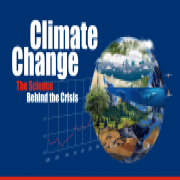Another threat to the lungs of the Earth: the rainforests are in danger
A new discovery: The rainforests are in danger due to the reduction of rainfall from thunderstorms in the region.
Deforestation in the Amazon may reduce the amount of thunderstorms and as a result, further damage the rainforests.
Researchers from Tel Aviv University have discovered that ongoing deforestation in the Amazon basin has led to a reduction in both the number and distribution of thunderstorms in the region in recent decades. According to those involved this is a surprising finding: "In most areas of the world, global warming causes an increase in the number of thunderstorms, but in this study we discovered that specifically in the areas of the rainforests, the number of storms actually decreased in the past decades. These findings are worrying because a decrease in the number of storms leads to a decrease in the amount of rain, which in turn causes further damage to the forests. This is a dangerous feedback loop which could cause severe damage to the rainforests that provide the world with a significant amount of oxygen and also absorb a large proportion of the carbon dioxide humans emit into the atmosphere."
The research was led by Prof. Colin Price and student Raam Beckenstein from the Department of Geophysics in the Porter School of the Environment and Earth Sciences at Tel Aviv University. The article was published in the Quarterly Journal of the Royal Meteorological Society (QJRMS).
Another threat to the lungs of the Earth
"The Amazon forests are the largest tropical rainforest in the world, and they play a critical role in regulating the Earth's climate," explains Prof. Price. "These forests are even called 'the lungs of the earth', because through the process of photosynthesis they produce a significant portion of the oxygen in the atmosphere but also absorb a large amount of carbon dioxide - a greenhouse gas with significant implications for climate change. In addition, the rainforests themselves produce rain: the trees emit water vapor into the air that turns into local rainfall."
The researchers point out that these important processes are currently in danger due to extensive deforestation in the Amazon. "Trees are cut down and areas are cleared for different needs: for wood, agriculture, infrastructure development, mineral mining, and more. In fact, in the 30 years between 1990 and 2020, a total area of forest larger than the entire continent of Europe was cleared in the Amazon basin. The destruction of forests has an impact on oxygen levels in the atmosphere but also causes an increase in greenhouse gases, as well as disruption to rainfall that may lead to drought in certain areas. In addition, trees that have been felled are often burned, leading to additional carbon dioxide emissions and environmental damage."
In this study, the first of its kind in the world, the researchers sought to track changes to the extent of thunderstorms in the Amazon basin over decades. In the absence of historic thunderstorm data, the researchers built an empirical model based on climatic parameters from the European Center ERA5, which has been collecting data since 1940, together with lightning data collected through a worldwide network of lightning detection sensors called WWLLN -the Worldwide Lightning Location Network.
"Lightning discharges emit radio waves that can be detected thousands of kilometers away," explains Prof. Price. "The sensors of the WWLLN network are deployed at 70 research institutions all over the world and they pick up the signals from lightning, and map the thunderstorms anywhere on the planet, continuously in real-time. Here at Tel Aviv University, on the roof of the Exact Sciences building, we have a sensor that picks up these radio waves from thunderstorms that occur in our region as well as in Africa, India, and even South America. Cross-referencing information from the various stations allows us to accurately determine the location and time of each lightning event, and thus build a global map of lightning."
A decrease in thunderstorms of about 8%
The researchers examined the relationship between the amount and distribution of thunderstorms and changes in temperature in the Amazon region since the 1980s. A statistical analysis of the data revealed surprising findings: despite an increase in temperature resulting from global warming, there was a decrease of approximately 8% in the number of thunderstorms. The researchers explained: "When we examined these unexpected findings in depth, we discovered that the areas of decline in thunderstorms overlap to a large extent with areas where extensive deforestation was carried out. This is the first time that a connection has been made between thunderstorms and deforestation. According to our estimates, the loss of each megaton of carbon due to deforestation - equivalent to the removal of about one million large trees - results in a 10% decrease in the number of thunderstorms."
Prof. Price concludes: "In this study, we examined trends in thunderstorms in the Amazon basin in recent decades. We expected to find an increase in the number of storms following global warming, as has been observed in many regions of the world, but to our surprise we found the opposite trend: a decrease of 8% over 40 years. Further investigation revealed that most of the decrease was observed precisely in the areas where rainforests have been replaced by agriculture or other human uses. This can be explained by the fact that the absence of the forests significantly reduced the humidity in the air, which is the source of energy and moisture for the formation of thunderstorms. The result is fewer thunderstorms, less clouds, less rain, and hence less forest growth. This creates a feedback process that can cause the forests to lose moisture and could significantly damage the vital roles of the 'lungs of the earth': oxygen production and carbon dioxide absorption."
If you haven’t joined TAU's Climate Initiative's mailing list to get the newsletter directly to your inbox, please join here.





